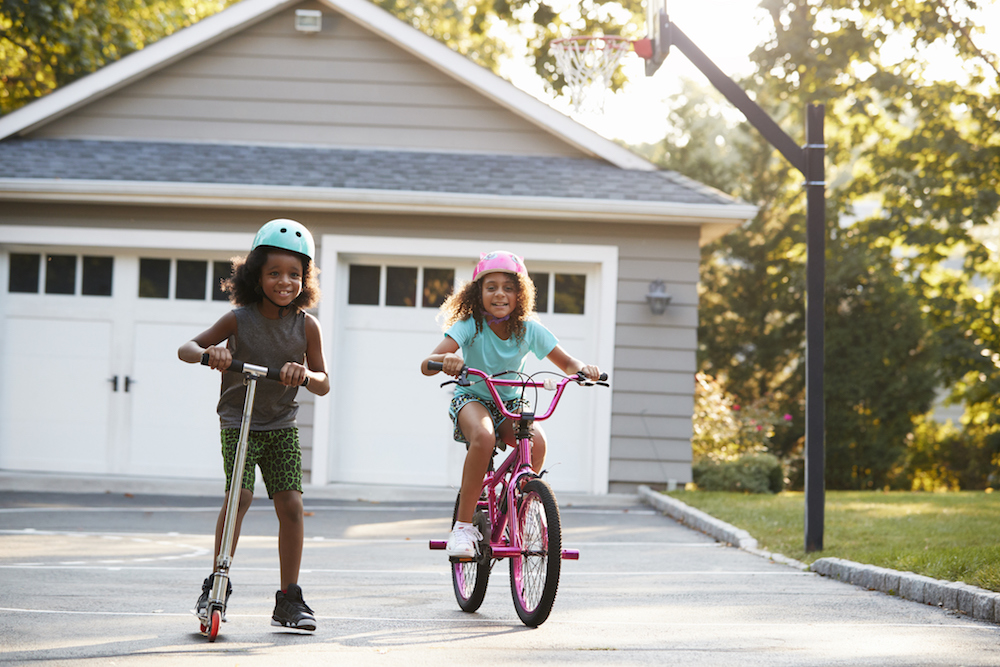Topics

Image Source
Temperatures are gradually rising, which means summer is just around the corner! Soon, kids will be out of school and spending more time playing outdoors at home, with their friends or at summer camps. While it’s very important for children to have a good time during summer break, it’s even more important to ensure their safety while they play.
When outdoors, it’s imperative for your child to wear appropriate sunscreen. It should be reapplied often too! For babies younger than 6 months of age, the American Academy of Pediatrics (AAP) recommends avoiding direct sunlight and remaining covered with a hat, light clothing, a stroller canopy or shade when outdoors. If these forms of protection aren’t available, a light layer of sunscreen (at least SPF 30) can be applied lightly to your baby’s face and back of the hands. For toddlers and adolescents, sunscreen (SPF 30 or higher) can be applied to any area of exposed skin.
When you’re choosing a sunscreen for your child, read the label for “broad spectrum,” meaning protection against ultraviolet A (UVA) and ultraviolet B (UVB) rays. One ounce of sunscreen, about the size of a full medicine cup, should be applied. Always test a new sunscreen on a small area of the back to evaluate for an allergic reaction, according to the AAP. If your child is going to be outside for an extended period of time, lip balm with SPF 30 can help protect their lips. If you want to give your child optimal protection from the sun, I recommend providing cool, protective cotton clothing alongside a hat and UV protection sunglasses. These aren’t just protective, but can be stylish too!
Summer is also the perfect time to enjoy the outdoors by riding bikes, skateboards, rollerblades and much more! These are fun activities indeed, but can quickly become dangerous if your child isn’t appropriately protected. Injuries from falls, crashes and collisions can cause a trip to the ER, resulting in broken bones, a brain injury and even possibly death. Helmets protect the skull by absorbing energy from a hit and scattering this energy across a larger surface. This energy transfer helps to protect the brain from injury, if worn correctly.
There are many different sizes of helmets available for children, so it’s important to find one that fits appropriately. Proper fitting helmets will sit low on the forehead and parallel to the ground when your child is looking up. There should only be room for two fingers between the chin and the straps when buckled. You can find additional padding to place inside the helmet if you feel it’s too loose and/or a better fitting helmet isn’t available. If your child’s helmet is damaged from an incident or simple wear and tear, it should immediately be thrown away and replaced. Unfortunately, high-impact injuries can still occur with a helmet on according to the AAP. If you’re concerned about your child following a fall, crash or collision, bring him/her to your local ER or urgent care facility immediately.
While you’re enjoying fun times with your child this summer, it’s also crucial to pack enough water and make sure enough water breaks are scheduled. Proper hydration is key! If children are playing outside, the APP recommends water as the best source of hydration for them. The recommended water intake for children goes as follows:
- Children ages 5-8; 5 glasses of water per day
- Children ages 9-12; 7 glasses of water per day
- Children ages 13 and up; 8-10 glasses of water per day
If your child is playing outdoors, even more water is recommended.
Sports drinks with electrolytes do not replace water, and they’re only recommended for child athletes in need of rapid replenishment of electrolytes and carbohydrates. If children are drinking too much of these sports drinks instead of water, they’re at greater risk for dental erosion and obesity.
This summer, be on the lookout for symptoms of dehydration and heat exhaustion including irritability, confusion, fast heart rate and increased thirst. In babies, a sunken or depressed fontanel, which is the soft spot between the bones of a baby’s skull, can be another sign of dehydration according to UpToDate. If you’re worried your child is dehydrated, Pedialyte® is a good source of electrolyte replacement when given with water. If he/she isn’t showing improvement, you should visit an ER or urgent care facility for evaluation.
Summer is a great time to enjoy the outdoors, be active and play with your children. If you know how to properly keep them safe during this hot season, you can spend less time worrying and more time enjoying their presence. If you have any additional questions regarding sunscreen, helmets or proper hydration, consult with your child’s pediatrician.
If you're interested in finding your local Texas Children's Pediatrics, click here.



